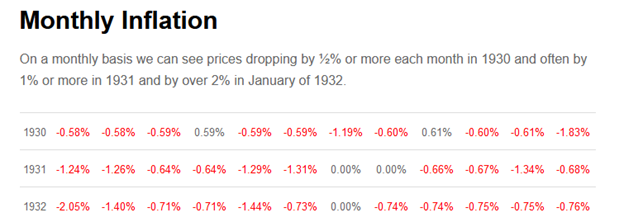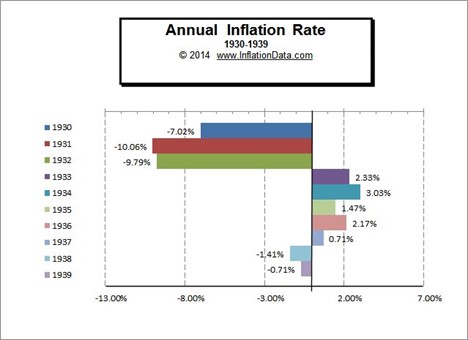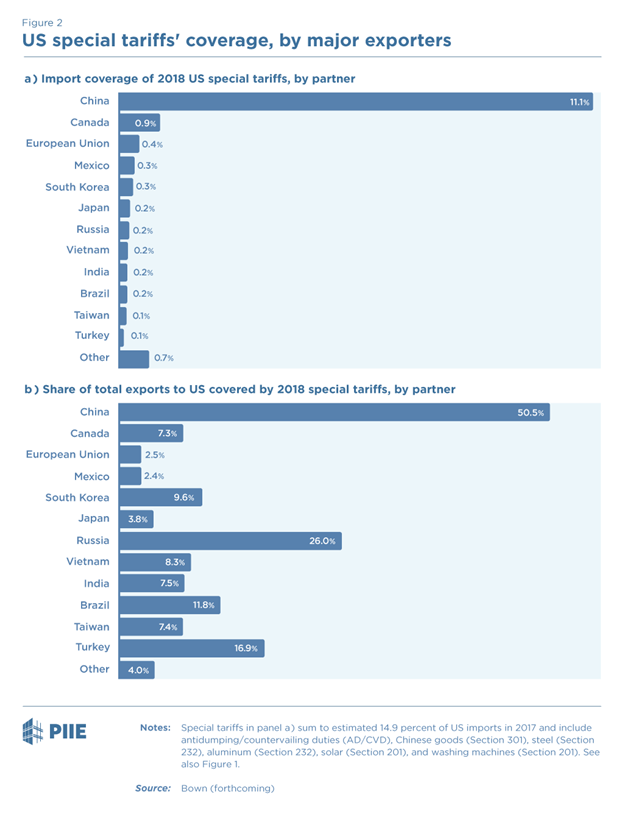- Mark Cuban Says Trump’s Tariff Proposals Will Ramp Up Prices- Business Insider
- Fed’s Kashkari Says Trump Tariffs Could Reheat Inflation If They Provoke Global Trade War- CNBC
- Blanket Tariffs Would Be Incredibly Inflationary, Says Strategist- CNBC
- Treasury Secretary Janet Yellen Warns “Sweeping Untargeted Tariffs” Would Reaccelerate Inflation- CBS News
- Trump Tariffs Expected To Spike Inflation, Interest Rates- Business Insider
The headlines regarding Trump’s proposed tariffs and their inflationary consequences are undoubtedly worrying, but will they prove correct?
Instead of taking the “experts” word, let’s consider how tariffs may affect the prices of all goods and services, not just the items subject to tariffs. Furthermore, it’s worth discussing how tariffs could impact the economy, as economic activity greatly influences inflation. Lastly, we lean on historical precedence, capitalism, and the dollar to further evaluate how tariffs might impact inflation and economic growth.
Higher Prices And The Substitution Affect
Price changes of a good or service are primarily a function of supply and/or demand variations. However, price indexes, the basis for which economists measure inflation, are constructed on the prices of a basket of goods and services. The goods and services within the basket are weighted by the consumption of said items.
Considering the difference between the price of one good and the inflation index for an economy, let’s think about how consumers react to higher prices.
If the price of an imported good increases due to a tariff and the company selling the good commensurately increases the price, consumers respond in three ways.
- Some consumers will decide not to pay the higher price and purchase a substitute good.
- Others decide not to pay the higher price or buy competing goods and save their money.
- Another group of consumers will pay the higher price, leaving them with less money to buy other goods.
Consumers buying a substitute good at a lower price will shift the composition of the inflation basket of goods, minimizing the impact of the tariff.
Saving, thus not spending, will reduce economic activity, which is deflationary, as we will discuss when we consider how sellers might react to tariffs.
Some consumers will pay higher prices. While this is inflationary for the tariffed item, the consumers have less money for other items, which is deflationary for those goods.
While the prices of the tariffed item and substitute items may change with demand preferences, the net effect after re-weighting the inflation basket and accounting for any broad economic impact will be minimal.
The demand for goods and the prices within the inflation pie will shift with a tariff. However, the aggregate supply and demand should be largely unaffected unless new money is injected into the economic system.
Business Owners Reaction
The prior section focused on consumers’ reactions to business owners passing on 100% of the tariff through higher prices. Typically, that does not happen unless demand is inelastic, meaning consumers have no choice but to buy a good or service.
Despite the price of the tariffed good increasing, the sellers’ profit margin does not change. However, as noted, the seller will likely lose some sales to substitute goods or savings. Accordingly, in many cases, sellers decide to eat some of the tariff costs to avoid losing sales. Doing so reduces their profit margin.
Sellers, faced with reduced profit margins and lost sales, will try to reduce expenses to offset the loss from the tariff. This means they might lay off employees, reduce capital expenditures, or choose other cost-saving methods.
The bottom line is that reduced profit margins, diminished spending, and layoffs will reduce economic activity. The economy will suffer, and demand for more than just the tariffed goods will decline. The result would be lower inflation and growth.
Retaliatory Tariffs
It’s equally important to consider that countries may not readily accept tariffs on their exports to the US. Many countries will retaliate with tariffs on US imports into their country. Such tariffs would make US-made exports more expensive and, thus, less desirable to foreign consumers.
As a result, US exports would decline, thus reducing economic growth and resulting in potential job losses and less inflation.
With an appreciation for how tariffs can impact the economy and prices, let’s review the history books.
Smoot Hawley Tariff Act
In 1930, Herbert Hoover signed the Smoot-Hawley Tariff Act into law. The timing could not have been worse as the world was entering the Great Depression. Smoot-Hawley was intended to protect American jobs and farmers. The reaction from our trade partners was retaliatory tariffs on exported US goods.
US imports and exports were reduced by more than 50% within four years of the Act’s passage. Many Great Depression scholars blame the tariffs for playing a substantial role in amplifying the scope and duration of the Great Depression. The US paid a steep price for trying to protect its workforce through short-sighted political expedience.
While it’s hard to isolate the effect of the tariffs on the economy, GDP fell by an estimated 15% from 1930 to 1932. As a result, the unemployment rate rose to over 25%. From 1930 to 1932, the CPI index fell by 24%. The following table and graph, courtesy of Inflationdata.com, show the stunning deflation experienced in the early 1930s.


Trump 1.0 Tariffs
In 2018, Trump levied tariffs primarily aimed at China for a select group of goods. It is estimated the tariffs covered a little over $300 billion in imports. That accounted for about 12% of all imported goods. The tables below, courtesy of the Peterson Institute, show the share of the tariffs by country.

The following paragraph comes from The Impact of the 2018 Tariffs on Prices and Welfare, courtesy of the Journal of Economic Perspectives:
The figure shows a big surge in imports in the wave 1 products, washing machines and solar panels, prior to the imposition of tariffs, which was likely caused by importers moving forward import orders in order to obtain products before the imposition of the tariffs. For the remaining goods, it appears that on average their import levels were rising a little faster than for unaffected goods in the months prior to the imposition of the tariffs. In all cases, import values declined sharply after the imposition of the tariffs, typically falling 25 to 30 percent after the imposition of the tariffs. This drop is particularly striking given that imports for unaffected sectors and countries rose by about 10 percent over the same period, where this rise could in part reflect some import substitution from affected to unaffected countries and products in response to tariff changes.
As we wrote earlier, higher prices reduced the amount of imports of the tariffed goods and increased consumption of those goods not impacted by the tariffs. To this end, we just read the following headline: New York retailers stock up, switch suppliers as Trump tariffs loom
Furthermore, the article states:
Therefore, the full incidence of the tariffs has fallen on domestic consumers and importers so far, and our estimates imply a reduction in aggregate US real income of $1.4 billion per month by the end of 2018. We see similar patterns for foreign countries that have retaliated with their own tariffs against the United States, which suggests that the trade war has also reduced the real income of these other countries.
The graph below shows that US import prices fell from 2018 until the price surge due to the pandemic in late 2020.

Trump’s tariffs were designed to boost American industry. However, despite good intentions, the broader impact was reduced economic activity, with specific sectors facing deflationary pressures.
What About The Currency?
The reaction of the US dollar versus the currency of tariffed nations is also worth considering. For this, we lean on Hudson Bay Capital.
While in principle tariffs can be noninflationary, how likely is it? In the macroeconomic data from the 2018-2019 experience, the tariffs operated pretty much as described above. The effective tariff rate on Chinese imports increased by 17.9 percentage points from the start of the trade war in 2018 to the maximum tariff rate in 2019 (see Brown, 2023). As the financial markets digested the news, the Chinese renminbi depreciated against the dollar over this period by 13.7%, so that the after-tariff USD import price rose by 4.1%. In other words, the currency move offset more than three-fourths of the tariff, explaining the negligible upward pressure on inflation. Measured from currency peak to trough (who knows exactly when the market begins to price in the news?), the move in the currency was 15%, suggesting even more offset.
Measured CPI inflation moved from slightly above 2% before the start of the trade war to roughly 2% by the armistice. Measured PCE inflation went from slightly below the Fed’s target to further below the Fed’s target. Of course, there were crosscurrents like the Fed’s tightening cycle at the time, but any inflation from this trade war was small enough that it was overwhelmed by these cross-currents. This explains the Trump camp’s view that the first U.S.-China trade war was noninflationary.
Only 11% of Chinese goods are subject to tariffs. The prices of the other 89% of non-tariffed goods fell for Americans due to the depreciation of the Chinese yuan versus the dollar. The net currency effect of prices of all goods imported from China was negative. If we could, we would edit the last line in the comments above and say the US- China trade war was deflationary.
Let Capitalism Work
The US is one of the world’s most productive and wealthiest countries. Consider that our poorest state, Mississippi, has a higher GDP per capita than France. Our prosperity is the result of many factors, most of which are beyond the scope of this article. However, one key factor is that we generally have less government economic interference than most other countries.
While adding tariffs to level the playing field may win votes and sound like a good idea, they are government interference. This is not to say that discussions with our trade partners shouldn’t occur or actions shouldn’t be taken, but it is to say that tariffs tend to bode poorly for the economy and result in lower prices.
Taxes, regulations, and other domestic or international governmental actions are not a recipe for more robust growth.
Summary
Economic theory and experience tell us tariffs are not inflationary. It’s correct to claim that a tariff on a good will raise its price. However, the claim fails to consider how consumers and sellers of the goods will react to higher prices.
Once all the economic, price, behavioral, and currency impacts net out, another round of tariffs will likely prove deflationary and harmful to economic growth.

